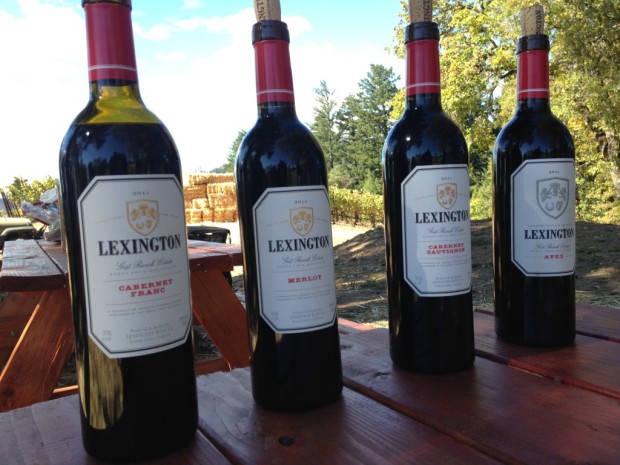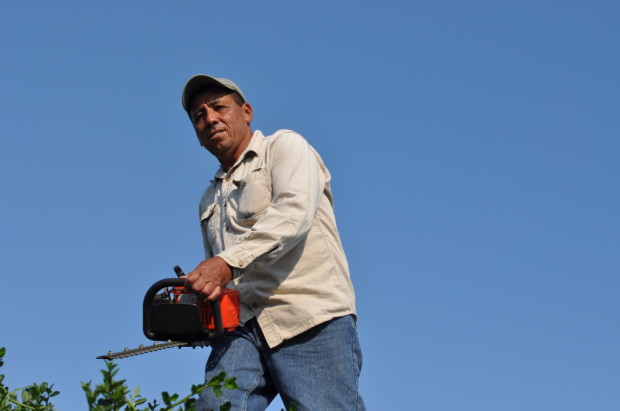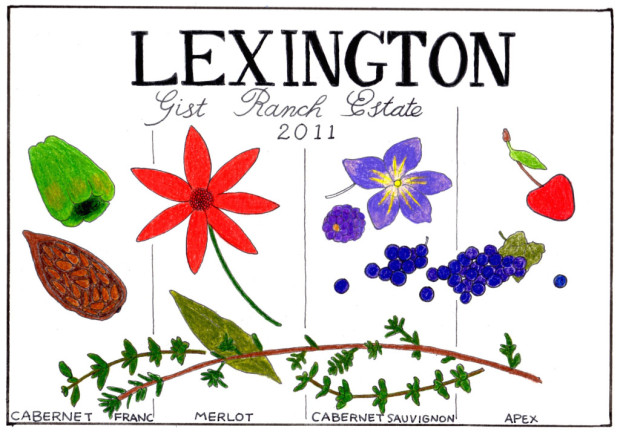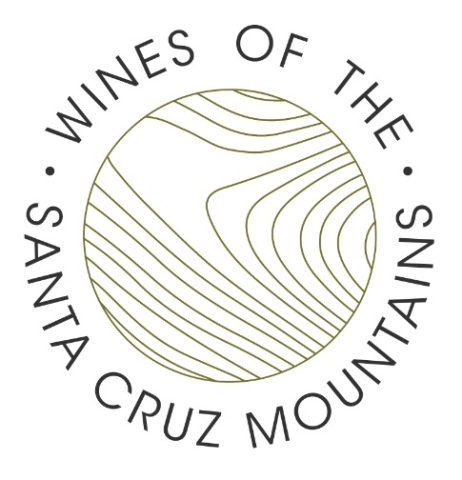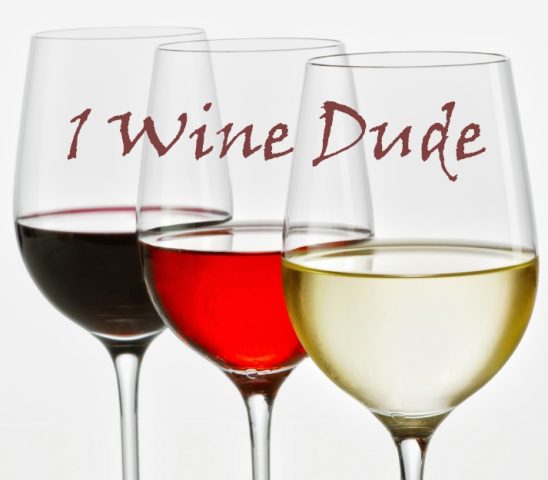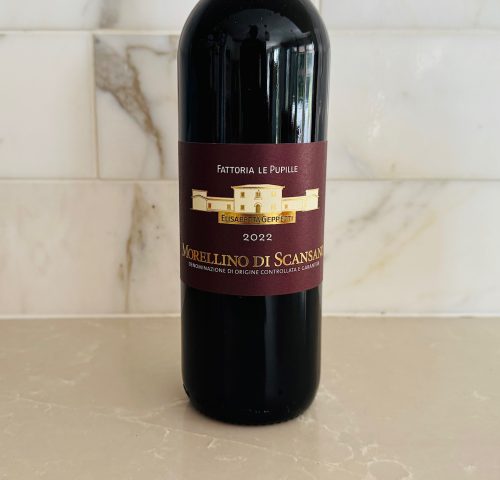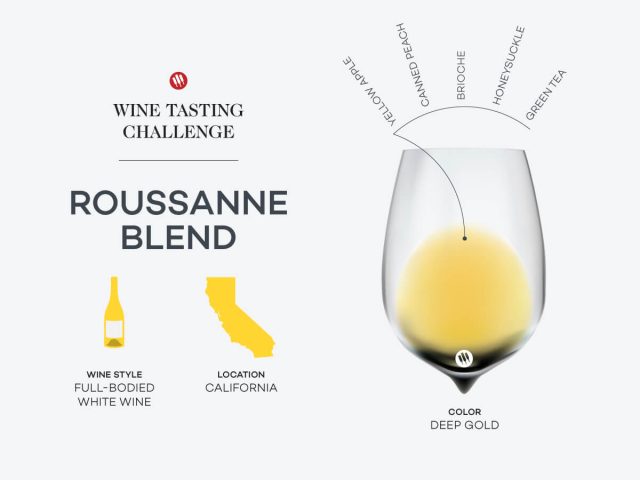Getting to Know Bordeaux Varieties in the Santa Cruz Mountains: Lexington Wines from Gist Ranch Vineyard
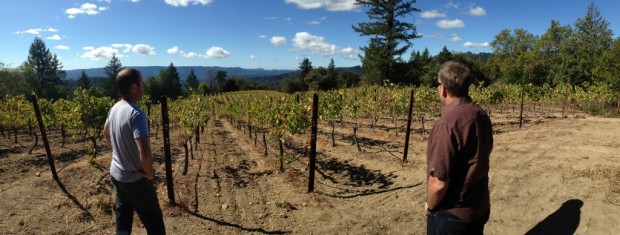
Visiting Gist Ranch Vineyard
 Nathan Kandler and Tommy Fogarty standing at the top of Gist Ranch Vineyard, Oct 2014
Nathan Kandler and Tommy Fogarty standing at the top of Gist Ranch Vineyard, Oct 2014
Spin the Santa Cruz Mountains AVA on your finger like a basketball, and the spot where it balances is Gist Ranch Vineyard, owned and farmed by Lexington Wines. The site sits on the Pacific plate in the Skyline subzone of the appellation. Gist Ranch grows Bordeaux varieties.
“There are not a lot of Bordeaux varieties on the Pacific plate,” Lexington winemaker Nathan Kandler explains. We’re standing at the top of the vineyard looking west. Through a low point in the mountains you can see the ocean. “David Bruce is just over the next ridge to the south. Big Basin is due west. We’re 13 miles from the ocean.” David Bruce and Big Basin are two wineries known for their Pinot Noir.
Risking a Site
The Santa Cruz Mountains AVA proves one of the most geographically varied in California. From above it appears like folds of cloth undulating in a series of north to south ridges, vineyards all aspects and slopes of varying degree and elevation.
One of the first truly mountain-based appellations in the state, the region rests between two moderating influences — the Pacific at its west, San Francisco Bay to its east. As a result, its lowest points are defined by the reach of fog — 800 ft on the eastern side, 400 ft on the west. The highest peaks climbing over 3000 ft.
The region rises from a conjunction of tectonic plates. Soils vary widely from ridge to ridge, and slope side to ridge top, thanks to the persistent activity of the plates. Gist Ranch stands atop the Pacific plate, an unusual spot for Cabernet.
“We started planting [Thomas] Fogarty [Vineyard] in 1980,” Tommy Fogarty, GM and son of the winery founder Thomas Fogarty, explains. Thomas Fogarty Vineyard and Winery rests in the Skyline subzone of the Santa Cruz Mountains, known for its Pinot Noir and Chardonnay, while also making quality Gewürztraminer, and Nebbiolo.
“The site clearly wanted to grow Pinot Noir and Chardonnay,” Fogarty continues, “but dad and Michael [Martella, founding winemaker of Fogarty] love and knew Cabernet so always wanted to work towards that. Then they found the Gist site, and Michael thought it could grow Cab.”
The idea proved controversial.
“Even fourteen years ago,” Kandler points out, “it was hard to get temperature and atmospheric info.” No one knew for sure the growing conditions for the site. At the time it was planted as a Christmas tree farm with no need for temperature monitors. Neighbors Paul Draper of Ridge Vineyards, and David Bruce of his eponymous winery weighed in. “Draper agreed it could grow Cab. David Bruce said it would never ripen.”
“We bought the property,” Fogarty adds. “We put in temperature monitors. Two years later we started planting. We have real time weather reporting here on the site now, and have for a couple years, so it’s interesting to see the impact storms have here compared to up there [at Fogarty.]” Though the two locations are only a few miles apart they host markedly different meso climates.
Seeking Cabernet
“Dad always wanted to do Cabernet.” Tommy explains. “His reference to start was Napa until he found Ridge.”
Michael Martella, and Thomas Fogarty, the co-founders of the winery, loved Cabernet. In the 1980s it was generally understood that California Cabernet’s natural home was in Napa. Ridge would bring attention to Bordeaux varieties in the Mountains, but even so, it was too hard to source Cabernet from Santa Cruz.
As such, Thomas Fogarty Winery would purchase fruit from the Stag’s Leap district of Napa Valley beginning in 1981, then turning to Yountville from 1986 to 2006. It was an unusual choice for a Santa Cruz winery known for Pinot Noir to make Napa Cab but it was a matter of affection.
Tasting one of the mid-1980 Cabernets with Kandler and Fogarty it’s a lovely, quaffable wine with the giving complexity of an older Napa Cab, but it also feels stylistically distinct from the other Fogarty wines of the same time period.
“We bought Napa Cabernet until 2006,” Kandler says. “Then it didn’t make sense anymore to make Napa Cabernet as a Santa Cruz Mountain winery.” By then the Gist Ranch Cabernet was also available.
The Fogarty team could turn their attention to local fruit but Santa Cruz Cabernet turned out to need a total rethink in approach from Napa Valley fruit.
Getting to Know Gist
“Gist is its own project.” Fogarty explains. “We realized it’s not just Fogarty Cabernet, so we started a different label, Lexington.”
Getting to know the Gist Vineyard over several years allowed a new sense of exploration for the Fogarty team. Though Gist Ranch sits mere miles from the Fogarty site, and in the same subzone as well, the Gist vineyard has its own style and perspective. Over time, then, the Fogarty team realized Gist was thoroughly distinct from Fogarty wines.
“We have done a few vintages of vineyard designate Cabernet from Gist for Fogarty but it’s not just Fogarty Cabernet.” Kandler says. “This fruit gives me a whole new energy in the cellar.”
A few years of getting to know Gist Ranch fruit after having worked with Napa Valley Cabernet gave Kandler the advantage of perspective.
“I’ve learned a lot in ten years or so of making wine from Gist Ranch. What my friends do with Napa Cabernet doesn’t translate.” Santa Cruz Mountains offer a distinctive structure and fruit expression from its North Coast cousin.
“When I made wine from Gist like I would with fruit from Napa, Cabs from the site would end up seeming more tannic.” Kandler describes. But Gist Ranch Cabernet turns out to be a great lesson in perception versus actual composition.
“Actually though it’s the acid levels more than that it’s more tannic.” Kandler continues. “The wines taste more tannic than Napa Cab, but if you do analysis the numbers tell you the opposite. It’s more about tannin management. It’s about tannin-acid balance.” To find that proper balance, the Fogarty team went deeper into the vineyard.
Farming Gist
Julio Deras, Gist Ranch, and Fogarty Vineyard Manager, August 2013
“I don’t know if it is just my Pinot Noir background,” Kandler says, describing his work with the Gist Ranch Vineyard. “But I am really trying to wrap my head around these blocks to understand them. So we micro farm, and micro ferment, and try to learn from the vineyard. As a winemaker you only have limited time and energy. Spend your time thinking about the vineyard, and the vines. The more time you spend thinking about the site, rather than thinking about barrels and yeast in the cellar, the better.”
In recognizing the contrast between different blocks, Kandler’s most important guide rests in Julio Deras, vineyard manager for both the Gist Ranch, and Fogarty sites.
“That’s one of the things that is so great about working with Julio as vineyard manager.” Kandler explains. “He really understands about variability of ripening in one vineyard, and picking based on that. He walks the vineyard and tastes looking for that. Julio has farmed here from the beginning. He has been with Fogarty for 20 years.”
As he continues, Kandler speaks with a deep intimacy of the various vineyard blocks. “We have four Cabernet blocks,” Kandler says. There are four and a half acres of Cabernet planted in the midst of thirteen total planted acres. “Thinking about the two southern blocks, they are more about power and strength. The two northern blocks give more the cassis and the fruit. The thing about these Bordeaux varieties, is it is so much more about blending.”
Tasting through previous vintages of Gist Ranch Cabernet bottled under the Thomas Fogerty label shows Kandler and Deras’s increase in understanding. The wines are delicious but show a more seamless focus, greater structural balance, and a greater sense of easy integrity as they progress. It’s a mastery that comes from greater health in the vineyard, and also a stronger understanding of its peculiarities.
Growing Bordeaux Varieties
By the 2011 vintage, Fogarty and Kandler felt they’d found their clarity with Gist Ranch, and were ready to release them as their own Lexington wines. The first, current release includes three varietal wines — Cabernet Sauvignon, Cabernet Franc, and Merlot — as well as a tête de cuvée, the Apex. (Though in 2011 the Apex turns out to be predominately Cabernet Sauvignon.)
The other Bordeaux varieties of Gist Ranch prove unique as well. “The top portion where the Cab Franc, and Merlot are planted are a little less vigor, and a little more challenged.” Kandler says.
“We have this Merlot growing in sand,” Kandler continues. “It’s really all about structure, so I think it’s pretty unique for Merlot.” Tasting the Lexington Merlot gives pretty red fruit and flower, with loads of structural integrity coupled with a lifting freshness.
The Cabernet Franc too pours unique. “The Cab Franc here actually ripens after the Cabernet,” Kandler says. “We had a stagiaire this year from Bordeaux, and he said, ‘that’s impossible! You pick Merlot, then Cab Franc, then you pick Cabernet.’” The Gist Cab Franc gives just a hint of bell pepper mixed through a melange of dried herbs, hints of chocolate, and electric purity.
Though we couldn’t taste it on its own, Kandler and Fogarty report they’re happy enough with the Malbec that they hope to bottle some on its own eventually too.
I ask Kandler to describe the process of finding his footing with such a unique vineyard site after having worked with the same variety from other locations.
“It’s interesting, in making Cabernet, letting go of Napa as a benchmark,” he responds. “It’s completely different making Cabernet here than in Napa. Then you turn to Ridge because that’s your neighbor, but that is such a specific site, and again really different from here. At some point you have to just turn to your site, and have faith in what you’re doing. That takes some time. I didn’t just come with it.”
***
Tasting Lexington Wines
Lexington 2011 Cabernet Franc Gist Ranch Estate 14.4{45b0463633054486b24ea7f1d8a3d5c23c88cedad61f649c1174e653e8a53946} 173 cases. Wonderful purity, with an electric hum. Flavors of mixed dried herbs, ground cacao, and just a hint of bell pepper and earthiness. This wine has easy tannin presence, and nice balancing acidity with an ultra long finish. Great for food. Delicious.
Lexington 2011 Merlot Gist Ranch Estate 14.5{45b0463633054486b24ea7f1d8a3d5c23c88cedad61f649c1174e653e8a53946} 98 cases. Nice brightness, and a sense of brawn without aggressiveness. Concentrated red fruit with an exotic red floral lift and conifer forest accents. Easy, persistent tannin, nice balancing acidity, a saline crunch throughout with graphite accents lingering into a long finish. Intriguing and delicious.
Lexington 2011 Cabernet Sauvignon Gist Ranch Estate 14.1{45b0463633054486b24ea7f1d8a3d5c23c88cedad61f649c1174e653e8a53946} 1223 cases. Lots of freshness, and layers of complexity. Nice concentration, and purity. Light herbal amaro notes mixed through fresh berry, and hints of cassis. Creamy mid palate, nice balance, with a long drying finish.
Lexington 2011 Apex Gist Ranch Estate 14.1{45b0463633054486b24ea7f1d8a3d5c23c88cedad61f649c1174e653e8a53946} 193 cases. Seamless with a sense of lightness. Mixed herbal lift, with cocoa accents, and fresh cherry with cassis. Nicely done acid to tannin balance on a long drying finish. Will develop beautifully with age, and age a long time.
***
Lexington Wines: http://www.lexingtonwineco.com
Copyright 2015 all rights reserved. When sharing or forwarding, please attribute to WakawakaWineReviews.com.
(c) Hawk Wakawaka Wine Reviews – Read entire story here.
